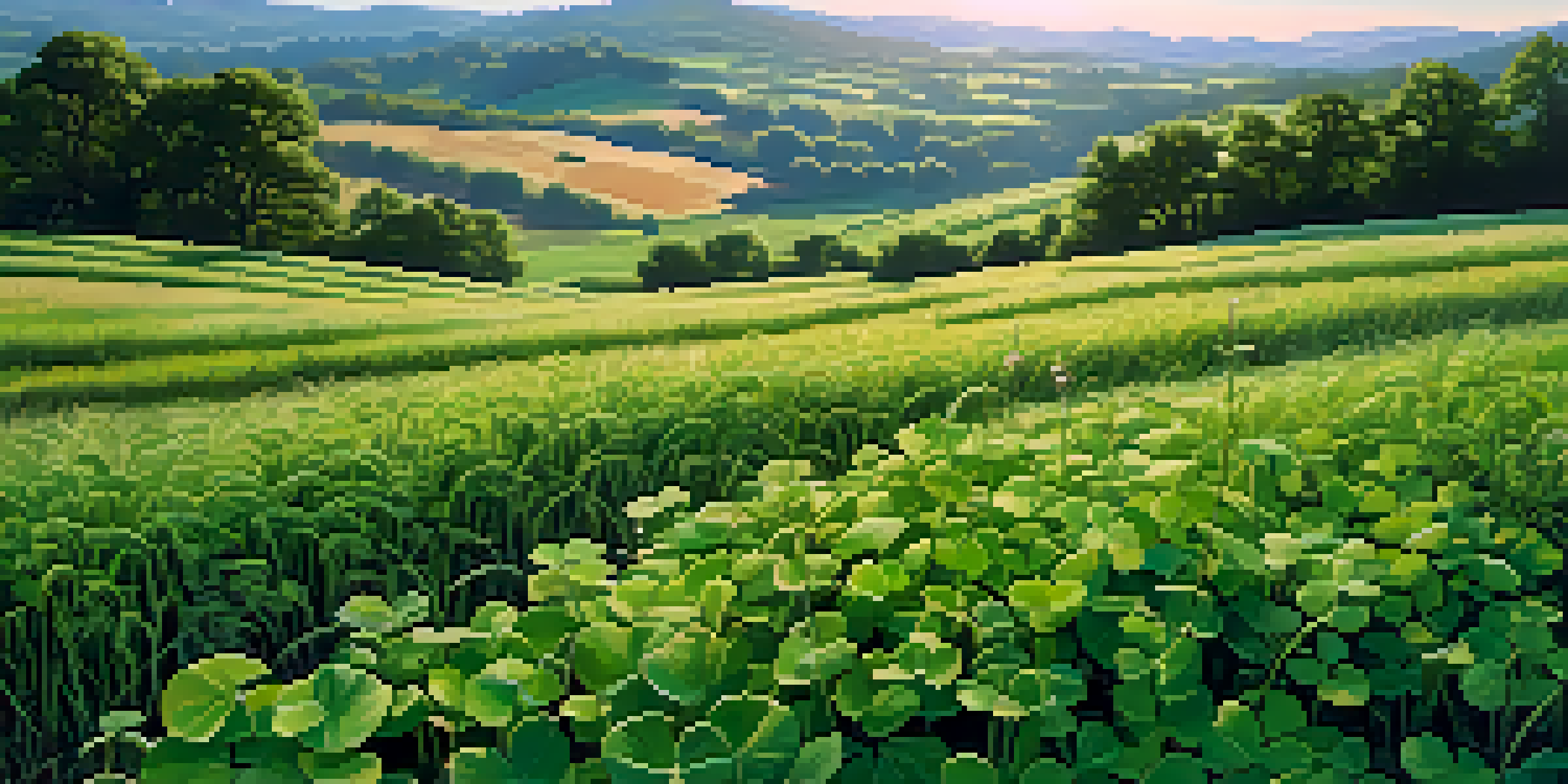Cover Crops: Protecting Soil from Erosion with Plants

Understanding Cover Crops and Their Importance
Cover crops are plants grown primarily to protect and enhance soil health rather than for harvest. They play a crucial role in sustainable agriculture by improving soil structure and fertility. By covering the soil, these crops can prevent erosion, a significant concern for farmers and landowners alike.
How Cover Crops Combat Soil Erosion
Soil erosion occurs when wind or water dislodges and removes topsoil, which is vital for crop growth. Cover crops, with their extensive root systems, help anchor the soil, reducing the risk of erosion. Additionally, when cover crops are left to decompose, they add organic matter that further enhances soil stability.
Cover Crops Enhance Soil Health
Cover crops are essential for protecting soil, preventing erosion, and improving its structure and fertility.
Types of Cover Crops: Choosing the Right One
There are various types of cover crops, such as legumes, grasses, and brassicas, each offering unique benefits. For instance, legumes like clover fix nitrogen in the soil, enriching it for subsequent crops, while grasses like rye provide excellent ground cover. Selecting the right cover crop depends on your specific soil needs and local climate conditions.
Cover Crops and Biodiversity: A Natural Solution
Integrating cover crops into farming practices can promote biodiversity in the ecosystem. By providing habitat and food for various organisms, cover crops support pollinators and beneficial insects. This biodiversity not only helps control pests but also contributes to a healthier soil ecosystem.
Diversity Boosts Ecosystem Health
Integrating cover crops promotes biodiversity, providing habitats for beneficial organisms and aiding in pest control.
The Role of Cover Crops in Water Management
Cover crops play a significant role in water management by improving soil infiltration and moisture retention. Their roots create channels in the soil, allowing rainwater to seep in rather than run off. This not only reduces erosion but also enhances water availability for crops in drier seasons.
Economic Benefits of Using Cover Crops
While there may be initial costs associated with planting cover crops, the long-term benefits can outweigh these expenses. Improved soil health leads to better crop yields and reduced need for chemical fertilizers. Farmers often find that cover crops help them save money while also promoting sustainable farming practices.
Long-Term Economic Savings
While there are initial costs, using cover crops can lead to better yields and reduced reliance on chemical fertilizers, saving money over time.
Challenges in Implementing Cover Crops
Despite the benefits, there are challenges to implementing cover crops. Farmers may face issues such as timing, particularly in regions with short growing seasons, and the potential for increased pests. However, with proper planning and management, these challenges can often be addressed effectively.
Getting Started with Cover Crops on Your Farm
If you're interested in using cover crops, start by assessing your soil's needs and your farming goals. Research local varieties that thrive in your area and consider consulting with agricultural extension services for guidance. With a little planning, you can successfully incorporate cover crops into your routine and enjoy the myriad benefits they offer.